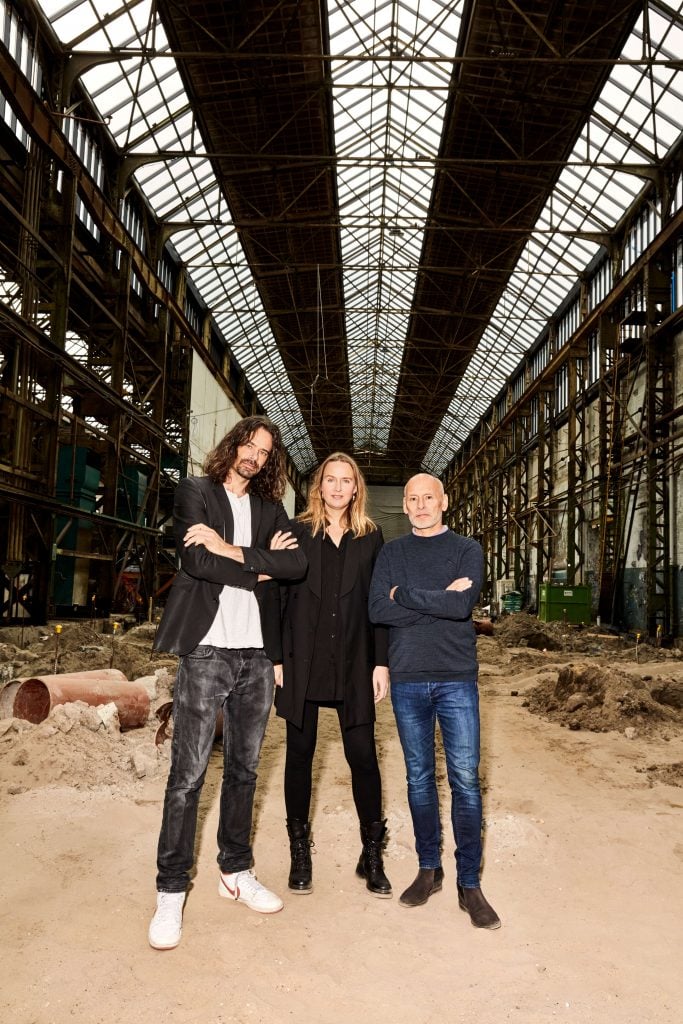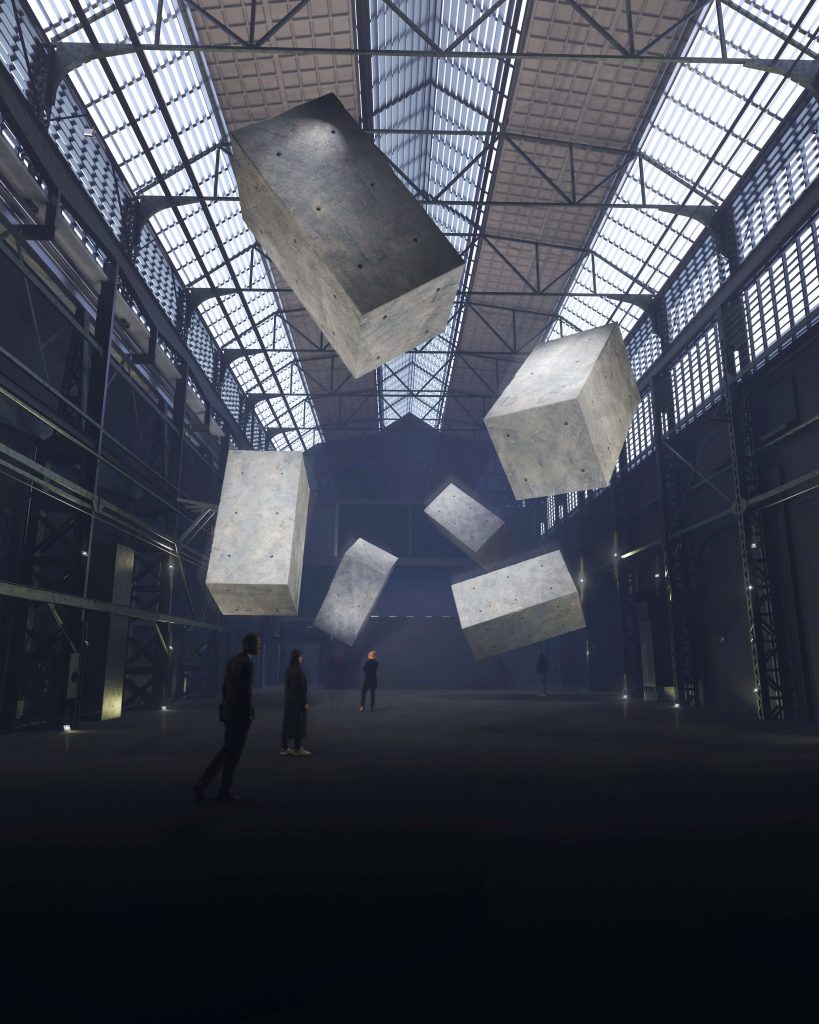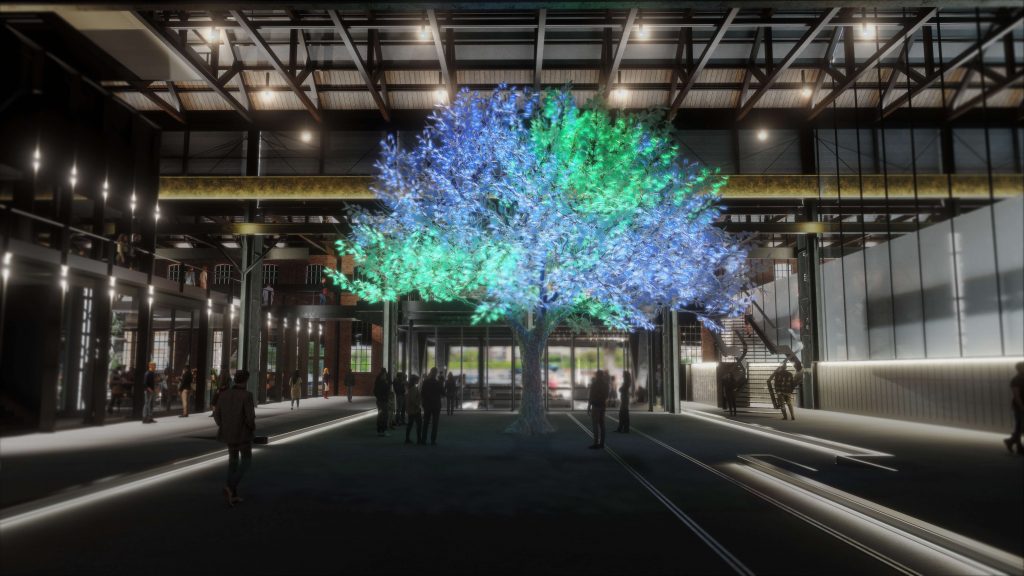Museums & Institutions
Artist Duo Drift Will Open a Museum in Amsterdam to Showcase Their Epic Installations in Their ‘Full Glory’
The Drift Museum—featuring an indoor harbor, no less—is slated to open in 2024 or 2025.

The Drift Museum—featuring an indoor harbor, no less—is slated to open in 2024 or 2025.

Adam Schrader

The Dutch artist duo Drift, known for making large-scale choreographed sculptures and kinetic installations, is launching a new museum in Amsterdam, set to open in 2024 or 2025, which will give them better control over the display of their works.
The duo, Ralph Nauta and Lonneke Gordijn, has partnered on the Drift Museum with entrepreneur Eduard Zanen, the cofounder of baby stroller company Bugaboo and owner of a range of sustainable businesses.
Nauta and Gordijn first saw the building, the Van Gendt Hallen, in 2013 and thought it was their dream location for a studio for their monumental installations. The massive 139,930-square-foot facility consists of five industrial factory halls designed by the architect Dolf van Gendt in 1898. (Drift doesn’t always make monumental installations. Earlier this year, they embraced “Barbie Mania” with their work, Materialism Barbie, made of deconstructed doll parts.)
Gordijn specified that everyone loved the high ceilings and large open floor spaces and Nauta adding, “When we walked into the space for the first time, it just had grandeur.”
Zanen, now a cofounder of the museum, had also fallen in love with the building and bought it at the time as a possible headquarters for Bugaboo. He said the building has “very nice characteristics and structures.”
“We didn’t get to the point where we would create headquarters in this building because the two founders got into a difference of opinion about the future, so I bought the other 50 percent of the building,” Zanen said. “I started to make new plans.”

A visualization shows what one of Drift’s works would look like inside the completed museum. Photo courtesy of Drift.
Drift, while coming off the success of its solo exhibition at the Stedelijk Museum in 2018, decided to start developing its museum and reached out to Zanen, who said he had already admired their work “for a long time.”
“We decided to call Eduard and see if we could buy it from him. We got to know each other then and we began to click,” Gordijn said. Zanen called the relationship a “match made in heaven.”
Nauta said the structure was used as a factory to build steam trains during the Industrial Revolution in the Netherlands and that its ties to the history of technology resonated with the artists. Drift was also inspired by a 2004 work by Olafur Eliasson installed in the turbine hall of Tate Modern, with Nauta calling it “the most powerful thing we saw [that] put us on our path.”
The museum itself will take up about 86,111-square-feet in two of the five factory halls. The rest of the Van Gendt Hallen will be transformed into sports centers, restaurants, offices, and spaces for start-up companies focused on sustainability. The building required a massive, sustainable renovation to ready it to open as an energy-neutral museum, slated for late next year or early 2025.

A visualization shows what one of Drift’s works, Tree of Life,would look like inside the completed museum. Photo courtesy of Drift
The team is using a custom-made machine in the hall itself to fabricate modular walls of a sustainable and fire-retardant bio-composite material from another of Zanen’s companies. The modular walls will allow the artists flexibility over the interior of the museum to adjust to the space to their works, rather than the other way around as is typical with site-specific installations.
“[For the] first time ever, we can create the museum around the works, a museum designed for the pieces,” Nauta said. “The compromise you sometimes have to do with specific locations takes away from what the piece can be.”
The massive project even includes an indoor harbor to shuttle people into the museum by electric-powered boats, Gordijn said, removing a strain imposed by transportation on the environment. Zanen said it took four years for the team to get the required permit to build their indoor harbor.
“The experience of everything will start when you enter the boats,” Nauita added. “We will bring people into a certain mindset, so we will have to design everything that goes on within that boat.”
Nauta said visitors to the Drift Museum will follow a through-story as they move from room to room and see each of the duo’s pieces. Gordijn called it “living content” with 50 percent new pieces and 50 percent old pieces reaching their full potential in a space the team can control. After the opening, Drift will continue to develop new works that will premiere at the museum, allowing the experience of it to change.
“This is an opportunity to show [our work] its full glory. We now have a space that can create that full experience, so we want to go to the max of what we are capable of, and this is our mission,” Gordijn said. “Think about light sound, specific movement, timing, size of space—all these things influence a piece and now we have control over all of it. It’s very exciting.”
More Trending Stories:
Four ‘Excellently Preserved’ Ancient Roman Swords Have Been Found in the Judean Desert